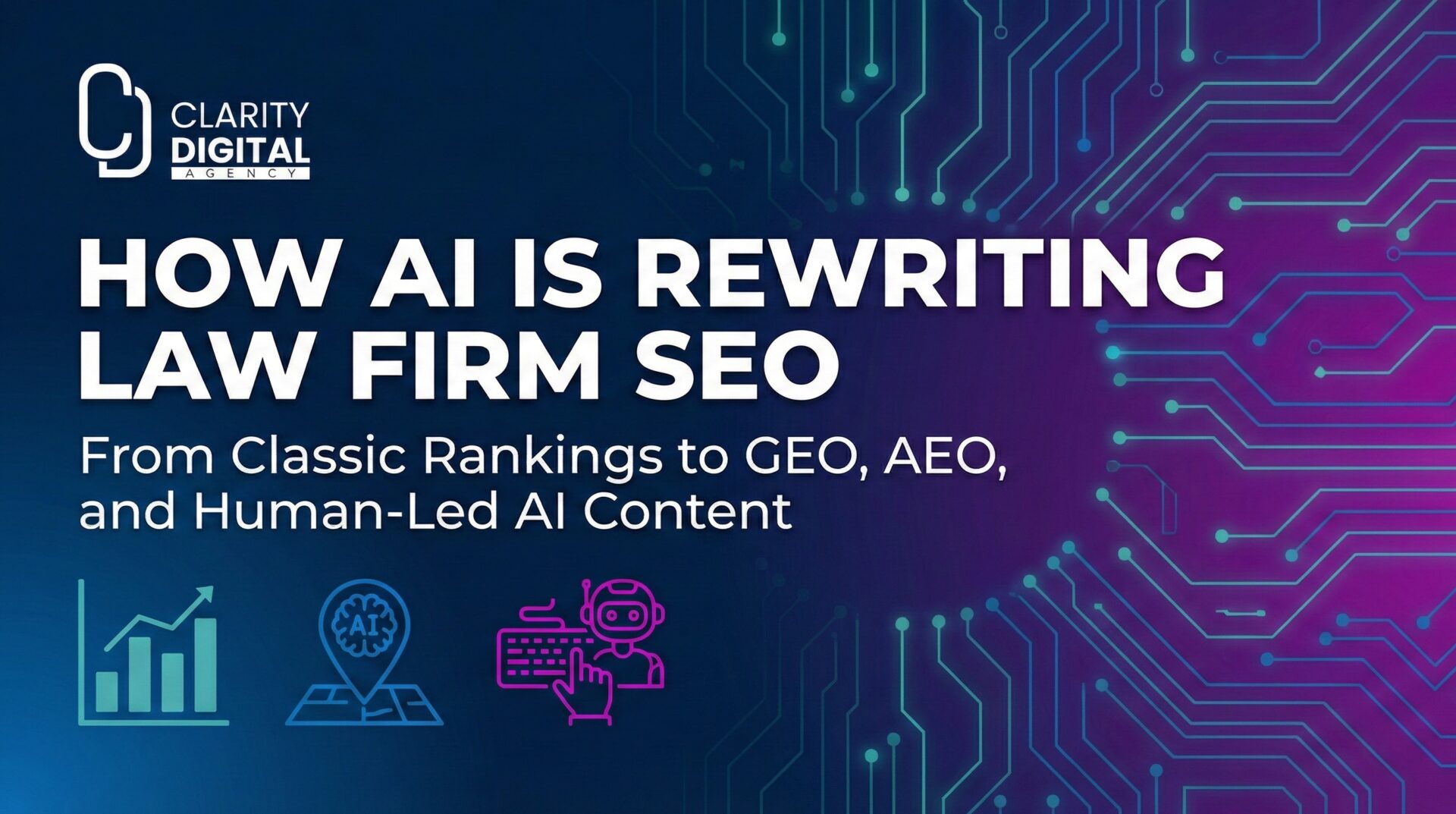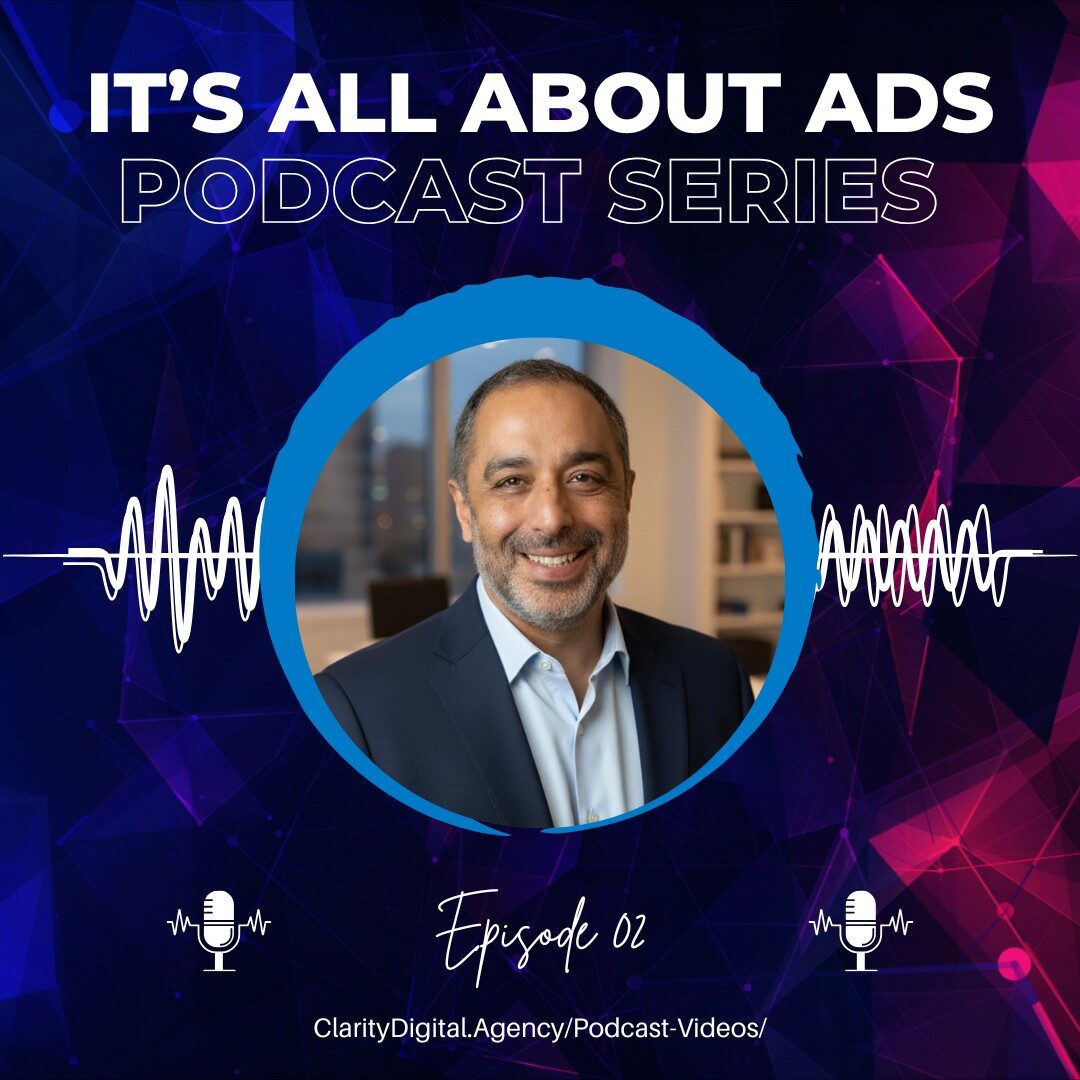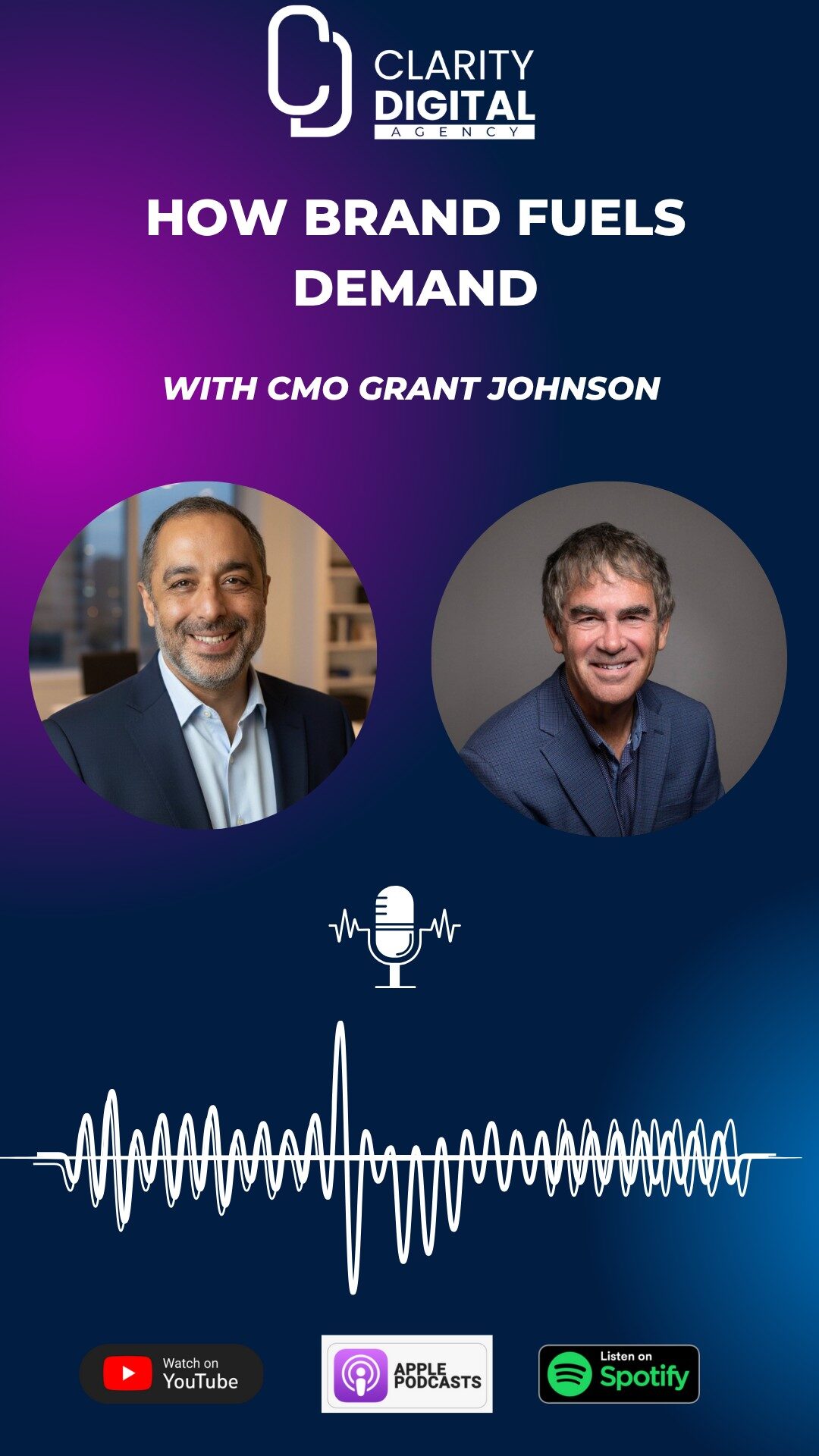The digital marketing landscape is undergoing a radical transformation. From the rise of AI-driven search engines to YouTube’s push into native advertising and Google’s relentless evolution of Performance Max, every aspect of how we connect with audiences is changing. At Clarity Digital Agency, we’re constantly analyzing these shifts not as challenges but as opportunities to rethink, realign and drive smarter growth.
In this comprehensive guide, we explore how leading platforms are adapting, which tools are shaping the conversation, and what it all means for brands trying to stay relevant, visible and efficient. Whether you’re focused on PPC, SEO, video strategy or AI visibility, the insights below are tailored to help you make informed, strategic decisions.
YouTube Is Giving Creators and Brands More Control
YouTube continues to evolve far beyond its roots as a video-sharing platform. It now operates at the intersection of entertainment, community and commerce. The recent updates to its Promote tools reflect this shift and open new doors for marketers looking for performance without the traditional barriers of Google Ads.
First, YouTube has expanded Community Posts by allowing up to 10 images per post. This might seem minor, but it’s a game-changer for creators and brands aiming to communicate visually without producing video. This opens the door to richer, more engaging storytelling formats within YouTube’s native feed.
Another big development is the ability for verified creators to edit auto-dubbed content directly in YouTube Studio. This is especially valuable for international creators or brands with a global audience. It improves multilingual content workflows, enhances accessibility and ensures that localization doesn’t require third-party tools or expensive production processes.
The biggest change, however, may be in the Promote tools themselves. Advertisers can now use purpose-built CTAs like “Get Quote,” “Book Now,” and “Contact Us” within Shorts and regular videos. These actions are fully integrated into YouTube Studio, meaning small businesses and creators no longer need to navigate Google Ads just to drive leads. This drastically lowers the entry barrier for performance-driven advertising.
At Clarity, we view these changes as part of a larger trend. YouTube is positioning itself not just as a content destination, but as a self-contained conversion engine. The tighter feedback loop between viewer engagement and action makes YouTube a platform where storytelling and ROI can coexist without compromise.
Performance Max Finally Becomes More Transparent
Performance Max has always promised scale, automation and performance, but it often came at the expense of visibility and control. Fortunately, Google has heard the feedback. The latest batch of updates makes Performance Max more usable and more accountable.
Among the most significant changes is the introduction of campaign-level negative keywords. This gives advertisers the ability to exclude irrelevant queries across multiple campaigns, helping reduce wasted spend and protect brand messaging. Previously, this kind of control was a major limitation.
Google also doubled the limit on Search Themes to 50 per asset group. This enables better alignment with intent and opens up more granular targeting opportunities, particularly for advertisers managing large inventories or nuanced services.
Device and demographic targeting have been restored and improved. You can now tailor campaigns specifically for mobile or desktop experiences, and further refine by age or gender. This kind of control is essential for B2B, DTC and localized marketing strategies.
Additionally, Google has improved attribution with better customer status reporting. Marketers can now accurately distinguish between new and returning customers. This is critical for optimizing acquisition-focused campaigns and calculating true ROAS.
One of the subtler but crucial upgrades is creative asset transparency. Marketers can now see which assets Google generated dynamically and can opt to remove or replace them. This allows for greater brand safety and alignment while still benefiting from machine learning.
From our perspective, these changes make Performance Max more compatible with strategic campaign planning. It’s no longer a “set it and forget it” system but a powerful tool that can support complex business goals when used intentionally.
YouTube Shorts Is More Than a TikTok Alternative
YouTube Shorts is gaining serious traction, and with 200 billion daily views, it’s time marketers stop treating it as an afterthought. It represents a massive opportunity for brands looking to reach users through short-form content, particularly when tied into broader Google ecosystems like Performance Max or Demand Gen.
One of the most overlooked advantages of Shorts is its unique audience reach. Research suggests that nearly half of Shorts users do not use TikTok and over 60 percent aren’t active on Instagram. This means Shorts is not just an extension of social video, it’s an entirely different segment of the attention economy.
YouTube is also investing heavily in shoppable integrations. Upcoming features powered by Google Lens aim to make video content instantly interactive. Imagine users tapping on an outfit, product or service mid-video and immediately purchasing without leaving the app. That kind of seamless commerce experience could be transformative for both retail and lead gen campaigns.
The ad efficiency is another draw. Advertisers are seeing CPMs as low as $5 while still benefiting from high engagement. YouTube’s machine learning helps ensure these placements go to audiences more likely to watch, act and convert.
Campaigns can run via Demand Gen, Performance Max, or YouTube Select Shorts, giving marketers a range of entry points depending on their goals. This flexibility makes Shorts not just a channel for awareness, but a viable part of lower-funnel strategies as well.
Shorts deserves a seat at the table alongside TikTok and Instagram Reels. If you’re serious about omnichannel video, leaving Shorts out of your media plan is a missed opportunity.
Negative Keywords Still Deliver in a Smart-Bidding World
In the age of automation, it’s easy to think negative keywords are becoming obsolete. But the opposite is true. They’re one of the few levers you still fully control, and they play a critical role in shaping campaign efficiency.
Negative keywords help filter out poor-fit queries that waste budget. Whether it’s users looking for “free” versions, irrelevant job listings or unrelated industries, exclusions prevent mismatched intent from eating up your ad spend.
There are now more layers to apply them: account-level for sweeping exclusions, campaign-level for strategy-specific targeting and ad group-level for creative alignment. And with campaign-level exclusions now available in Performance Max, Google is giving advertisers more power to fine-tune automation.
At Clarity, we also leverage tools like Optmyzr to automate the discovery of negative keyword candidates based on conversion performance and cost metrics. This helps us iterate faster and maintain efficiency as campaign dynamics evolve.
Even the best automated systems need boundaries. Negative keywords remain essential for budget control and performance predictability.
Targeting vs Observation: A PPC Strategy Pillar
Audience settings in Google Ads often go untouched, but the difference between “Targeting” and “Observation” can shape how your campaigns perform and scale.
When you choose “Targeting,” your ads are limited to users in the selected audience. This is great for remarketing or very specific customer segments. On the other hand, “Observation” allows your ads to show broadly while collecting data on how selected audiences interact. It also allows for bid adjustments based on performance.
We advise using Observation during testing or when launching new products. It helps you validate audience hypotheses without sacrificing reach. Once data confirms which segments convert best, switch to Targeting to improve efficiency.
One caveat: in Display and YouTube campaigns, we’ve found that Observation often leads to inflated impressions with poor relevance. These channels benefit more from using Targeting from the outset, especially for brand safety and messaging precision.
Understanding the nuance between these settings allows advertisers to scale more confidently and gather richer insights across campaigns.
LLM Visibility and the Rise of GEO (Generative Engine Optimization)
As large language models like ChatGPT, Gemini and Claude continue to evolve, they’re beginning to function like search engines, only without the structure or link attribution of traditional SEO.
That’s where GEO comes in. Generative Engine Optimization is a new discipline focused on ensuring your brand is correctly represented and frequently surfaced in AI-generated responses. With over a billion people now using AI tools as their primary discovery method, this visibility cannot be ignored.
Monitoring how your brand appears in AI results can help you:
- Catch and correct AI hallucinations
- Track if your brand is cited fairly or at all
- Benchmark against competitors in a new visibility layer
- Understand how your messaging is interpreted by LLMs
The Best LLM Visibility Tools on the Market
We’ve evaluated several LLM visibility platforms and recommend these for different needs:
- Ahrefs Brand Radar: Offers detailed visibility tracking across multiple LLMs including ChatGPT and Gemini. Great for SEO-minded teams already using Ahrefs.
- Peec AI: Monitors prompt and response data across top models. Provides alerts, sentiment analysis and integration with monitoring workflows.
- Profound: Built for enterprise, Profound delivers deep insights into AI search behavior, including citation tracking and integration with GA4.
- Keyword.com AI Search Visibility: A familiar interface for SEOs that extends keyword tracking into AI results. Tracks share of voice, sentiment and competitor mentions.
- XFunnel.ai: A GEO-first tool that simulates prompts across models to track hallucinations, brand mentions and optimization opportunities.
- FirstAnswer.ai: A lightweight but effective tool for brands looking to see if and how they show up in AI-generated content.
- Semrush Brand Monitoring & Otterly: Combines traditional media monitoring with AI-specific tracking through Otterly. Ideal for large brands already using Semrush.
Each of these tools has a role to play depending on your organization’s size, stack and needs. At Clarity, we believe every brand should be monitoring their AI footprint by Q4 2025. Visibility without links is the new frontier, and your narrative deserves to be part of the conversation.
Strategy Is Context
Digital strategy no longer lives in silos. YouTube ads, AI-generated mentions, PPC targeting, short-form content and machine learning-powered automation all intersect more than ever before.
The brands that will lead in 2026 are those who don’t chase every trend, but instead build systems that integrate these opportunities into something sustainable, strategic and measurable.
At Clarity Digital, we help you connect the dots. Because when your performance, content, and visibility strategies align, growth is no longer just possible, it’s inevitable.
Ready to take that next step? We’re here for it. Whether you’re seeking a forward-thinking SEM agency, a results-driven SEO agency, a paid search agency with precision targeting, or an AI search agency that understands the future of visibility, Clarity Digital is built to help you scale with confidence. Let’s explore how we can grow your brand together.





